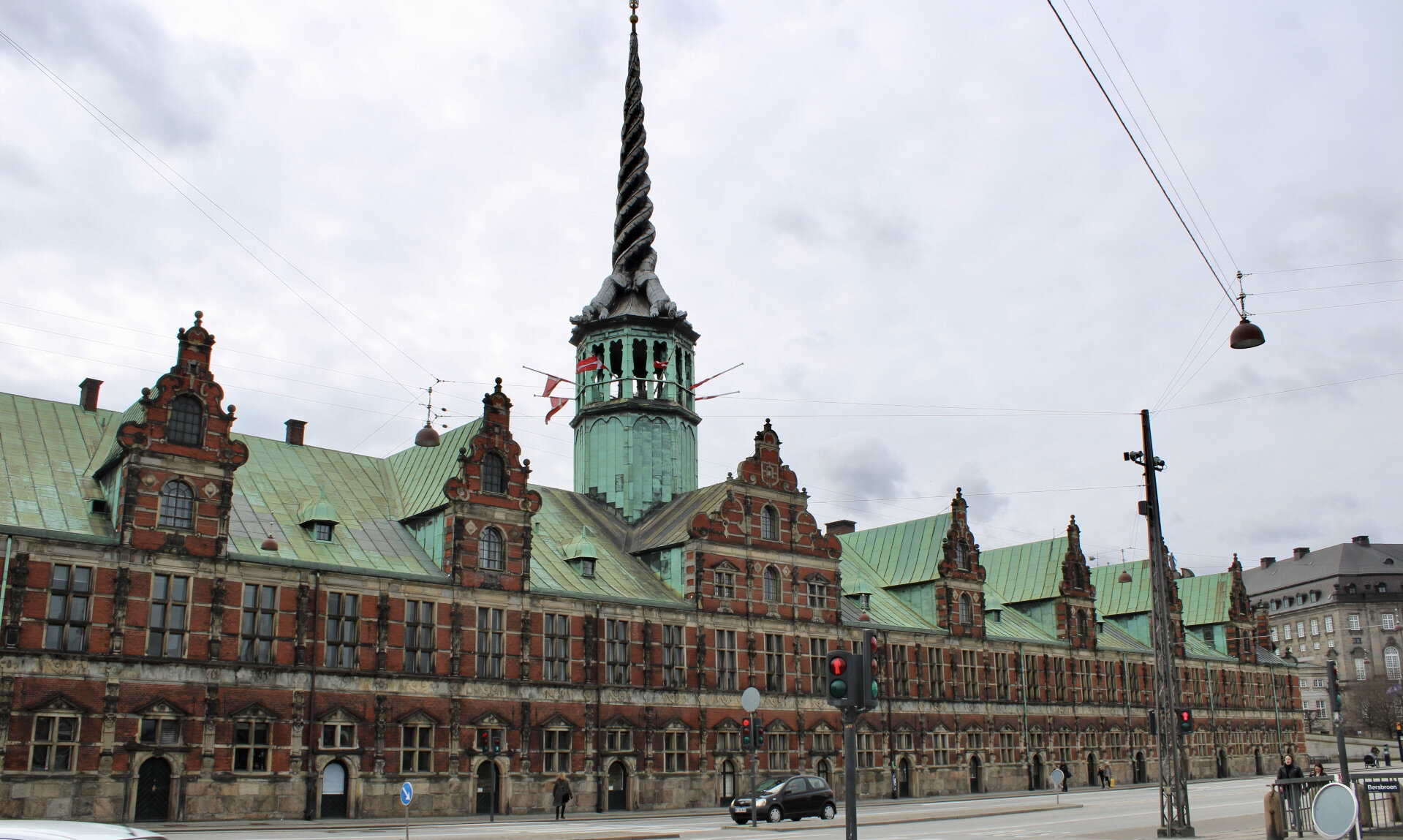Visit Børsen (The Old Stock Exchange) in Copenhagen
Beside the towering palace of Christansborg in the centre of Copenhagen once sat the city’s 17-century stock exchange. This building was a Danish cultural icon, a fascinating piece of architecture and had an amazing story to tell.
On the 16th April 2024 the stock exchange building was ravaged by fire. Fortunately no one was hurt but terrible damage was done to the entire building and its interiors, including the complete destruction of the beautiful spire.
In the words of the culture minister Jakob Engel-Schmidt:
‘‘Four hundred years of Danish cultural heritage went up in flames.’’
The story of Børsen
As I talked about in my guide to Nyhavn, 17th century Copenhagen was a thriving city, thanks to international trade. The king at the time, Christian IV, decided on a plan to build on this growing status and cement Copenhagen’s role as a centre for trade and commerce in Northern Europe with a brand new stock exchange building.
His intention was that trade and government should thrive side by side on the same island. Built between 1619-1625 (making it one of the oldest surviving buildings in Copenhagen), the building is a classic example of the Dutch Renaissance style with spire and elaborate gables, designed by the brothers Lorenz and Hans van Steenwinckel.
The finishing touches to the building came in 1625, with the addition of the 56-metre spire (pictured above) which is formed from the tails of four dragons entwining together. The spire is topped by three crowns, symbolizing the Scandinavian empire (Denmark, Norway, and Sweden).
Once completed, the building contained 40 trading offices on the ground floor and one large room of 500 square metres on the upper floor, which was used as a marketplace in the first half of the 17th century. As the image (below right) shows, Børsen was constructed on an artificial embankment added onto Slotsholm island, from where merchant vessels would be capable of unloading their wares onto the wharves on either side - then using ramps to bring goods directly into the Børssalen marketplace.
To confirm that Copenhagen now had a stock exchange and was on its way to becoming a trading centre, King Christian IV had an inscription placed in Latin above the entrance portals on both gables.
I think you’ll agree with me that he was clearly a modest guy:
“Christian IV, the almighty king of Denmark and Norway, the Venders and Gothers, the excellent father of the Fatherland, the happy steward of state property, has the famous example of the following great kings and in earnest zeal to increase his lands with rich trading places - founded the Danish stock exchange, as here you see - not to the secret arts of Mercury and Laverna, but first and foremost to the glory of God, then to the lucrative need of buyer and seller.”
Christian IV had originally chosen to have the roof made of lead, but during the Swedish occupation of Copenhagen from 1658-89, all of this lead was removed for the production of bullets and cannonballs. The replacement tin and tiles needed frequent repair work, yet it wasn’t until the 19th century that the characteristic copper was used as Børsen’s roofing - identifiable by the copper green colour seen in my photo at the start of this article.
The building played a central role in the history of Denmark for the next three centuries, housing the Danish stock market until 1974.
Up until April 2024, Børsen was the home of Dansk Erhverv (formally FDIH), aka the Danish Chamber of Commerce. The organisation’s gala dinners, conferences, parties and other events gave the chance to show off the now-lost 18th and 19th-century interiors to guests.
Visiting Børsen
Situated on Slotsholmen beside Christiansborg Palace, the characteristic green copper roofs and dragon-tail towers made the building hard to miss before the fire.
The building’s original presence on the promontory jutting out into the harbour has changed slightly in the centuries since its construction. Despite the building’s sad story, try to imagine how impressive this building would have looked to a sailor fresh-off-the-boat in Copenhagen, tasked with taking his wares into the covered indoor market.
Børsen is within walking distance of the train station, as well as the majority of central hostels and hotels. If you do make the trip to Børsen, combine it with an exploration of Christiansborg, then stroll north to Nyhavn and the Little Mermaid.
Explore more of Scandinavia
Why not check out my other guides to:
The best Bakeries and Swimming Spots in Copenhagen
The best Danish pastries (In my opinion!).
The Lofotens in Norway.
A hop across the Øresund Bridge to the amazing Malmo.
Or explore the rest of the Scandi Culture Experiences to find out what’s on offer.
Some of the beautiful lost interiors of Børsen.



